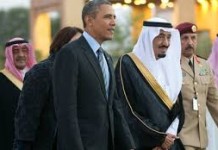Context
 The attack on Pakistan’s GHQ on October 10th and the string of other major suicide bombings represents a marked shift from the past, signifying the beginning of a new chapter, not only of the Afghanistan conflict but of extremism in Pakistan.
The attack on Pakistan’s GHQ on October 10th and the string of other major suicide bombings represents a marked shift from the past, signifying the beginning of a new chapter, not only of the Afghanistan conflict but of extremism in Pakistan.
The Pakistan Taliban has wrought enough havoc in just the last few days to undermine the assumptions underlying the US review of its Af-Pak strategy, currently underway.
Spiraling events are lending momentum to escalating regional tussles. The Interior Minister of Pakistan has claimed that Afghanistan is providing supplies to the Pakistani Taliban. As history amply shows, whenever conflict between global powers subside (that between the US and Russia springs to mind) ambitions of regional players flare up.
Analysis
Does the nexus between Al Qaeda, Afghan and Pakistan Taliban, including Kashmir Jihadis, exist on the ground, as some analysts claim? If so, then we are entering a very dangerous phase of the war on terrorism. The high profile attack on GHQ and other bombings across the country, the latest one in Shangla, Swat (supposed to have been cleared of extremists), have put the Pakistani Army on notice. Although some Western media sources have called the attack on GHQ a major security breach, there is a growing recognition that even with the best of equipment and training, the hardest war to fight is against one’s own people.
These attacks present the Pakistan Army with a choice: obey the wishes of the US and India regarding the Waziristan operation, which would be tantamount to committing suicide, or consent to peace negotiations. Furthermore, the extremists are sending a message to both Pakistan and the US as to who really holds the initiative.
Meanwhile, the US and India believe that Pakistan will have to eventually deal with all members of the extremist spectrum listed above, either one at a time or all at once. On its part, Pakistan appears to have made some strategic decisions in line with its traditional stance on Kashmir. For one thing, it is not going to simply abandon the Kashmir Jihadis; one can see this in the Lahore High Court’s dismissal today of the FIR’s against Hafiz Saeed of JuD. This stance doesn’t seem to be acceptable to the Awami National Party (ANP) of the NWFP/Puktunkhwa Province, which believes that the Pushtuns should not be the ones paying the most or all the costs for the Kashmir cause. So the ANP believes that if operations are to be conducted against Pushtun extremists in Waziristan and the tribal areas, they should also be carried out against the Jihadis in Southern Punjab. All of this is intensifying ethnic and administrative tensions within Pakistan.
The US and India started their largest joint military exercise today, as PoliTact previously reported they would in its August 25th article, “The Post-Baitullah Environment.” This exercise is taking place against the backdrop of the second attack on the Indian Embassy on October 8th. Pakistan also initiated its own naval exercise, “Seaspark,” as the Prime Minister left for China to attend meetings related to the Shanghai Conference Organization (SCO). Meanwhile, the nation’s Foreign Minister heads to Washington to help unravel issues related to the Kerry-Lugar bill.
In the aftermath of the Pakistan government’s debacle connected with the bill, the media reports that the high profile Ambassador of Pakistan to the US, as well as some other senior officials of the Foreign Service apparatus of the country, may have lost their jobs. On the other hand, the US State Department reported yesterday on disagreements on how to administer and manage aid in Pakistan. This suggests that Pak-US relations are not what they should be at a pivotal point in the Afghan conflict.
Authentic positive changes in Pakistan’s public perception of the US will no doubt take time and in the end it is the public perception, not that of the government, that matters most. At the present time, the Pakistani public is opposed to the ruling PPP government, which to it appears subservient to the US and indifferent to Pakistan’s national interest.
Tell Us What You Think



